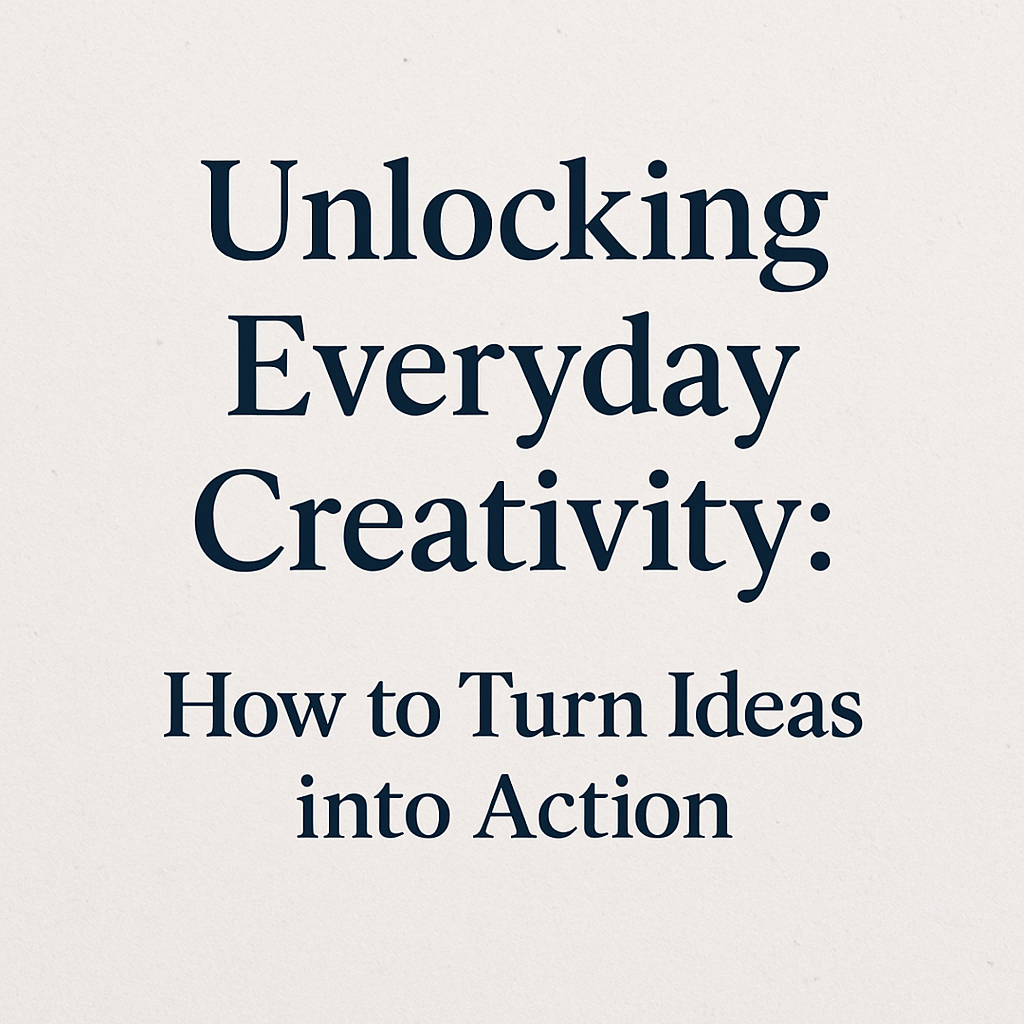Introduction
Creativity isn’t just for artists or musicians—it’s a life skill. In today’s fast-paced world, the ability to think creatively is key to solving problems, building businesses, standing out online, and living a more fulfilling life.
The best part? You don’t have to wait for inspiration. Creativity is a habit—and anyone can train it. Let’s explore how.
1. Redefine What Creativity Means
Most people think creativity is about art or design. In reality, it’s about original thinking and problem-solving—which applies to:
- Writing blog posts
- Starting a side hustle
- Planning a unique trip
- Developing new marketing ideas
- Building better habits
If you’ve ever solved a problem in a clever way, you’ve been creative.
2. Train Yourself to Be a Creative Thinker
You don’t wait for creativity—you practice it. Here’s how:
A. Start with Curiosity
Ask “why” and “what if” questions daily. Curiosity is the fuel behind every creative breakthrough.
B. Consume Differently
Don’t just scroll—study. Watch a documentary. Read a book outside your niche. Follow creators in opposite industries.
C. Make Space for Boredom
Yes, boredom. Some of the most creative ideas come when your brain isn’t distracted. Take tech-free walks or sit with silence.
3. Build a Daily Creative Practice
You don’t need hours—just 10–20 minutes a day.
- Journal your thoughts or ideas (try morning pages)
- Sketch, write, or record whatever comes to mind
- Use creativity prompts like “What would I create if I couldn’t fail?”
This trains your brain to produce instead of just consume.
4. Turn Ideas Into Action
Creativity means nothing without execution. Try this system:
The IDEA Formula:
- Identify the problem or opportunity
- Draft simple, low-risk solutions
- Experiment with one idea (minimum viable version)
- Assess and improve
Whether it’s a new blog, business idea, or social content strategy, this keeps momentum going without perfectionism.
5. Use Tools That Spark Innovation
Try these free or low-cost tools to boost creativity:
- Notion – Idea boards and journaling
- Canva – Visual content creation
- ChatGPT – Idea brainstorming or writing drafts
- MindMeister – Mind mapping
- Pinterest – Visual moodboarding
6. Collaborate and Share
Creativity multiplies when shared. Talk through your ideas with:
- Friends or mentors
- Online communities (Reddit, Slack groups, Facebook groups)
- A creative accountability partner
When you say your ideas out loud, they often improve.
Final Thoughts: Your Ideas Matter—But Action Matters More
Creativity is one of the most powerful tools you have. It’s not about being perfect—it’s about being consistent and courageous. Every blog post, product idea, travel plan, or business move started with a single moment of curiosity.
So today, take the first step: write the idea down, test something small, and keep moving forward.
Want to develop unstoppable creative momentum?
Download our free 7-day creativity kickstart guide and start building your creative confidence.
